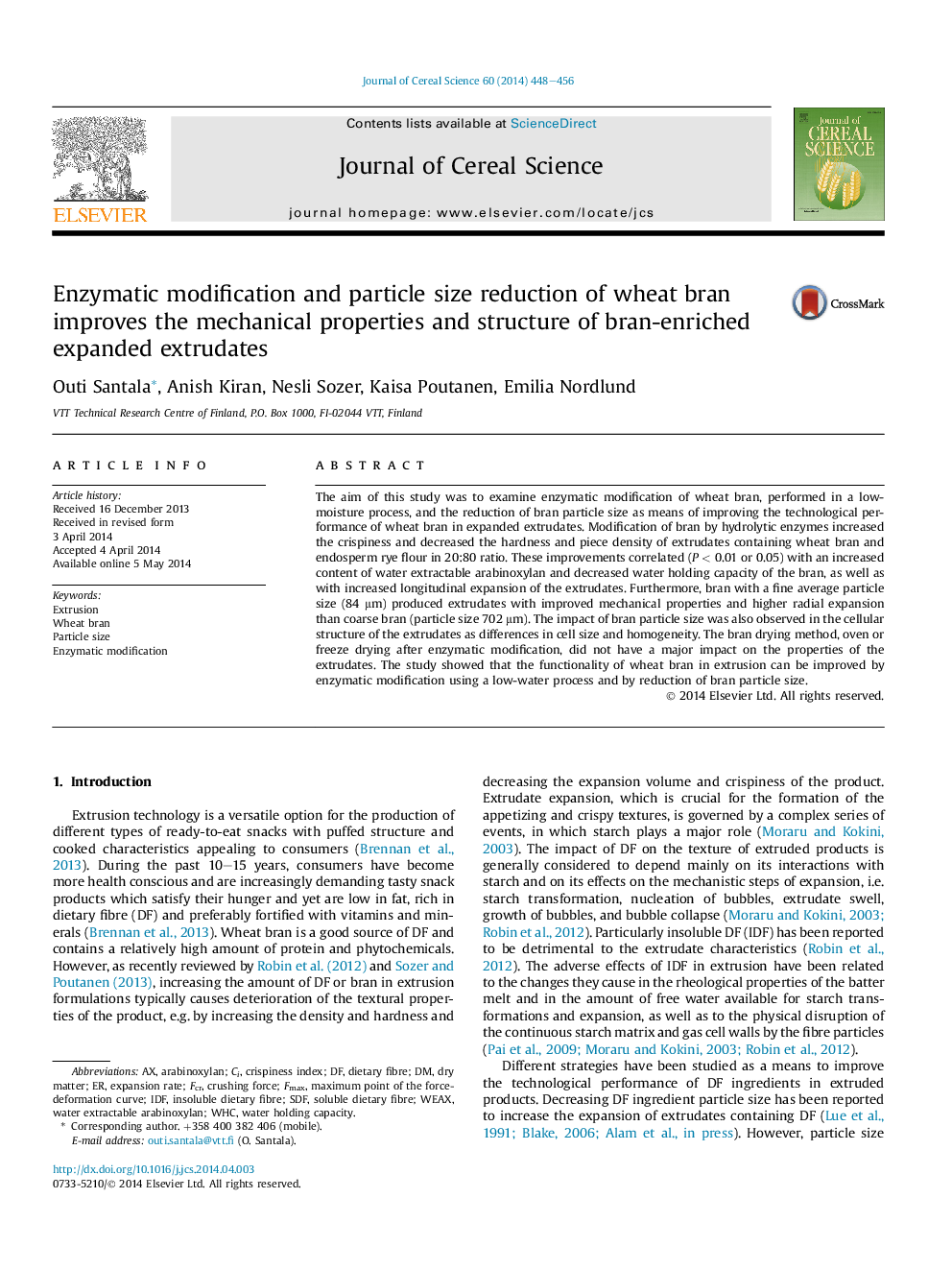| Article ID | Journal | Published Year | Pages | File Type |
|---|---|---|---|---|
| 4515863 | Journal of Cereal Science | 2014 | 9 Pages |
•Use of modified wheat bran in bran-enriched expanded extrudates was studied.•Fine and coarse bran were modified by hydrolytic enzymes using a low-water process.•Modification of bran by hydrolytic enzymes improved extrudate texture.•Improved texture correlated with changes in physicochemical properties of bran.•Fine particle size of bran also improved extrudate texture and radial expansion.
The aim of this study was to examine enzymatic modification of wheat bran, performed in a low-moisture process, and the reduction of bran particle size as means of improving the technological performance of wheat bran in expanded extrudates. Modification of bran by hydrolytic enzymes increased the crispiness and decreased the hardness and piece density of extrudates containing wheat bran and endosperm rye flour in 20:80 ratio. These improvements correlated (P < 0.01 or 0.05) with an increased content of water extractable arabinoxylan and decreased water holding capacity of the bran, as well as with increased longitudinal expansion of the extrudates. Furthermore, bran with a fine average particle size (84 μm) produced extrudates with improved mechanical properties and higher radial expansion than coarse bran (particle size 702 μm). The impact of bran particle size was also observed in the cellular structure of the extrudates as differences in cell size and homogeneity. The bran drying method, oven or freeze drying after enzymatic modification, did not have a major impact on the properties of the extrudates. The study showed that the functionality of wheat bran in extrusion can be improved by enzymatic modification using a low-water process and by reduction of bran particle size.
